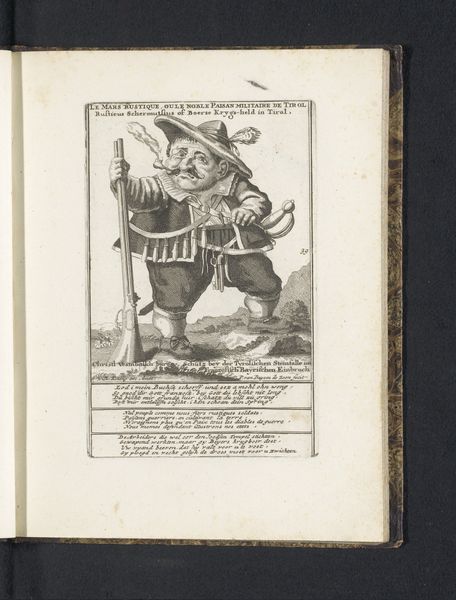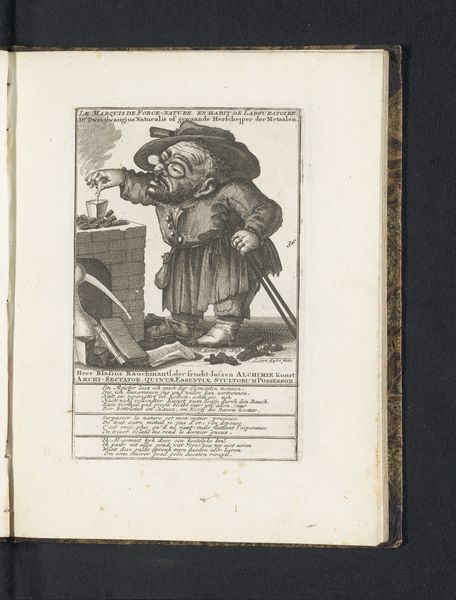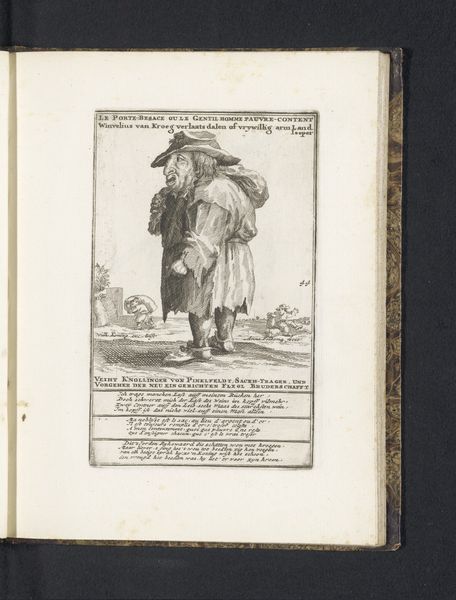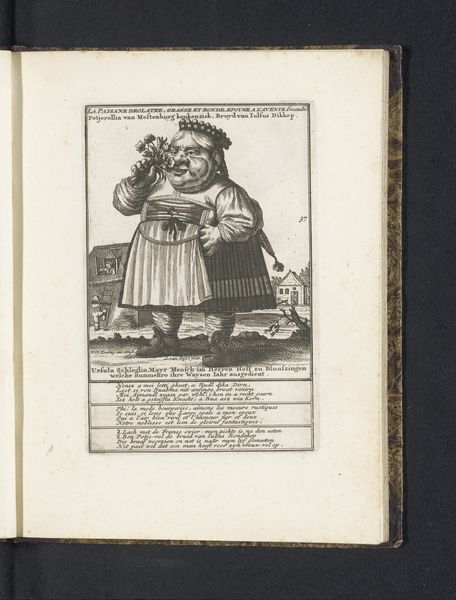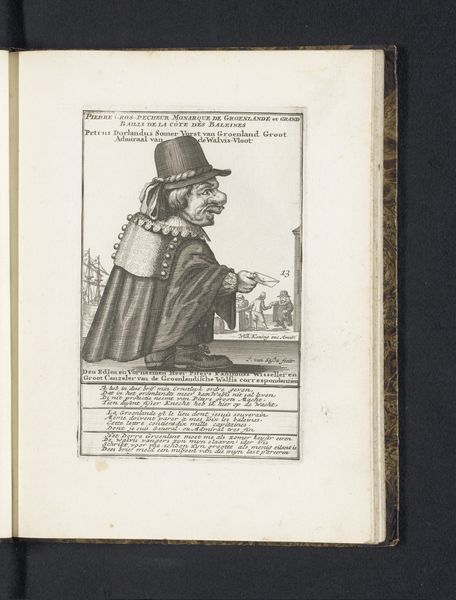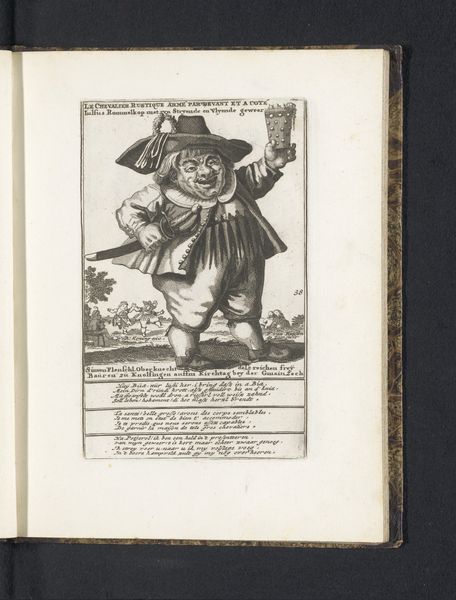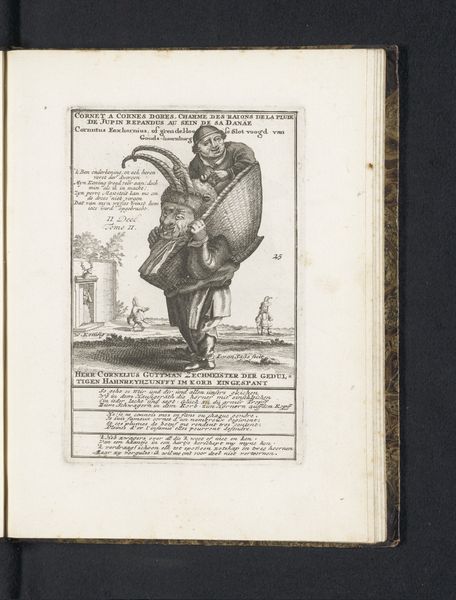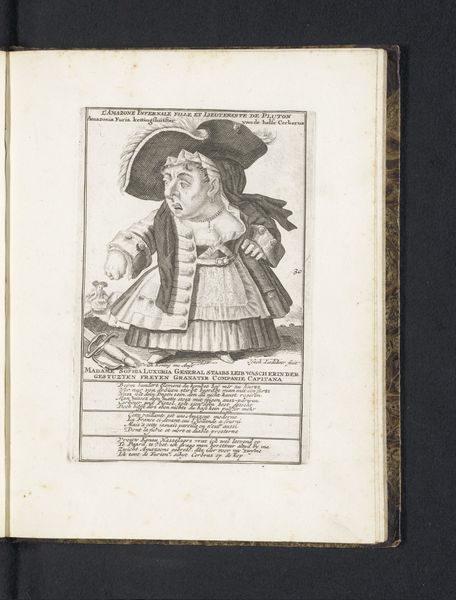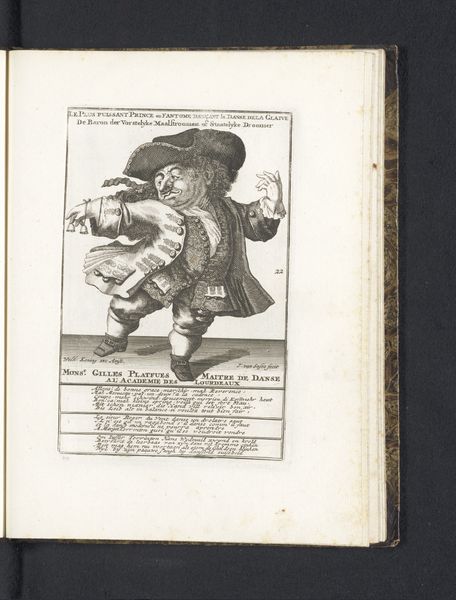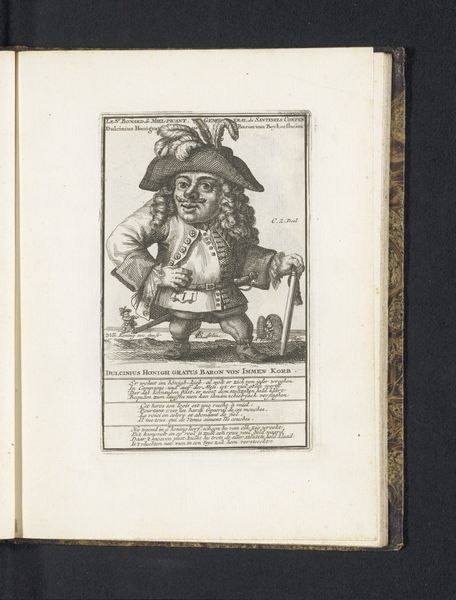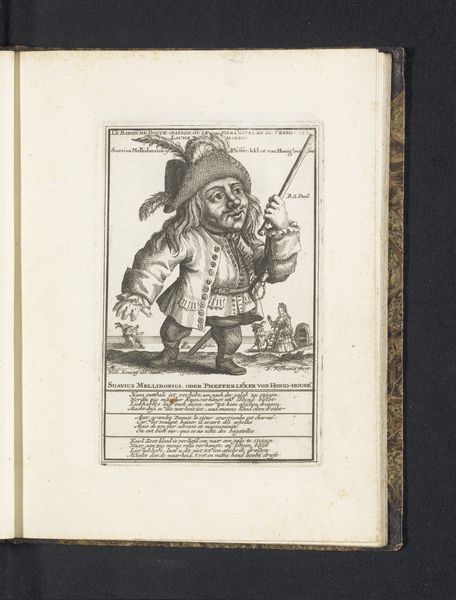
print, engraving
#
narrative-art
#
baroque
# print
#
caricature
#
genre-painting
#
engraving
Dimensions: height 169 mm, width 105 mm, height 227 mm, width 170 mm
Copyright: Rijks Museum: Open Domain
Curator: Immediately, there's such an intense energy from this image. The figure commands attention through her sheer size and stance, while a crude, almost grotesque aesthetic gives a sense of discomfort. Editor: This is "De dwerg Amazoonse Struik-rooveres," or "The Dwarf Amazon Bush Robber," an engraving made by Joost van Sassen between 1718 and 1720. It presents us with, well, what we might now consider a caricature. The Baroque period certainly had its own way of addressing gender and societal expectations through this lens of, shall we say, exaggeration. Curator: "Caricature" does feel like the right descriptor. I am seeing in her attire not only elements of gender parody, but indications of class and cultural identity. How does the Amazon figure perform notions of acceptable female roles, particularly when rendered as a dwarf? She is equipped for raiding: see her rough blade, the basket to store ill-gotten goods... It is not just a mockery, it suggests a disruption of the social order. Editor: Focusing on van Sassen's construction of space, note how the engraver positions her front and center. Van Sassen amplifies the effect with an almost hyper-detailed rendering of the foreground against a minimal setting of woods with armed people, reinforcing a sense of looming threat. Curator: Precisely. In doing so, van Sassen stages gendered power dynamics of his era in ways that implicate systems of labor, class and economics. One could imagine this being linked to discourses around banditry or even critiques of colonial trade at the time. Are we to read the title as an empowering gesture, as sarcasm or both? Editor: These strong diagonals draw the eye and create a rather unconventional pictorial composition. The artist utilizes a series of tightly-hatched lines that give density and texture to this very robust central character, establishing a play between figure and setting that complicates simple binary readings. Curator: I am intrigued by that duality of complexity, as one might question who or what this print was actually designed to do within the visual economy of its time. A polemic? An affirmation? The question alone provides important context to van Sassen and 18th-century social mores. Editor: Thinking of line and volume has opened up some new ideas for me today. Thank you.
Comments
No comments
Be the first to comment and join the conversation on the ultimate creative platform.
